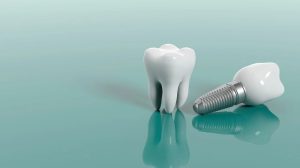Dental treatment, especially implants, is changing rapidly due to innovative advances. Among these developments, the cost for dental implants and new technology that improves outcomes and patient experiences are always discussed. Cost meets cutting-edge treatments to revolutionize dental restoration in this evolving marketplace.

3D printing, CAD, and CAM have changed dental implant technology. These technologies have revolutionized implant personalization, allowing for mouth-specific implants. This customized technique improves implant fit and comfort and cuts production and fitting time.
Additionally, 3D printing in dentistry has introduced previously inconceivable materials. Durable, biocompatible materials have improved implant strength and endurance, potentially changing the economic calculation and patient cost-benefit analysis.
Robotics in dental implant surgery is another innovation. Implant placement is more precise with robotic dental surgery, reducing human error. Precision ensures that an implant integrates appropriately with the jawbone and lowers the chance of post-surgical problems, which can increase costs and suffering.
Imaging technology is also improving. Cone Beam Computed Tomography (CBCT) enhances bone structure and density assessments by providing unprecedented clarity and resolution in dental imaging. This advancement allows for more precise implant placement and early detection of possible difficulties, preventing costly and unpleasant repercussions.
Biotechnology has created bioactive and innovative implants that aid healing. These implants merge more naturally and swiftly with human bone, shortening healing time and boosting dental implant success. Faster healing reduces downtime and follow-up visits, lowering patient costs and discomfort.
Dental implant innovation includes nanotechnology. Researchers are altering materials at the molecular or atomic level to create implants that resist bacterial growth and biofilm development, improving post-operative outcomes and implant lifespans.
In conclusion, dental implant technology evolves quickly. These advances may improve therapeutic results and make patient solutions more accessible and affordable. Technology improves restorative dentistry treatments' efficiency and affordability, giving patients hope. The transformation of dental implants from replacements to life-enhancing solutions shows how contemporary dentistry may benefit lives.
